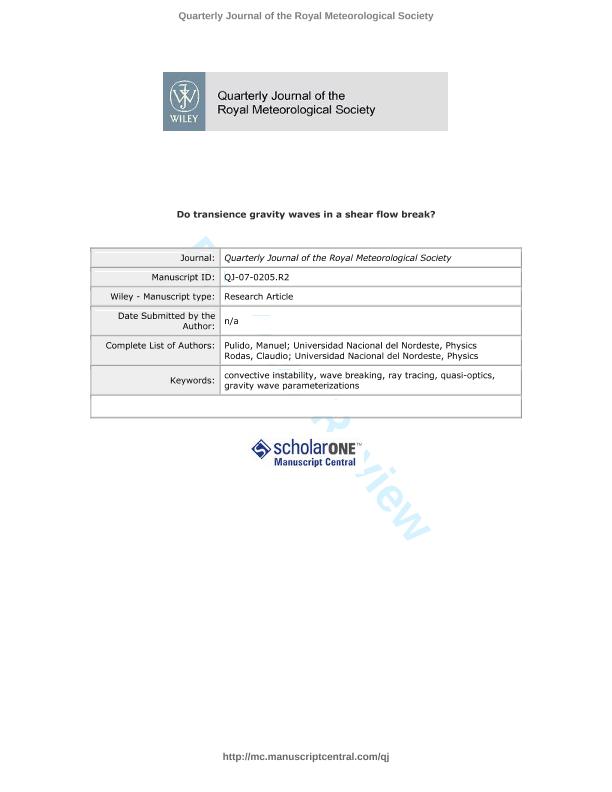Artículo
Do transience gravity waves in a shear flow break?
Fecha de publicación:
10/07/2008
Editorial:
John Wiley & Sons Ltd
Revista:
Quarterly Journal Of The Royal Meteorological Society
ISSN:
0035-9009
Idioma:
Inglés
Tipo de recurso:
Artículo publicado
Clasificación temática:
Resumen
The propagation of transient gravity waves in a shear flow towards their critical levels is examined using a ray tracing approximation and a higher-degree (quasi-optic) approximation. Because of its transient forcing, the amplitude of transient waves decays to zero in the neighbourhood of the critical region so that it is not clear whether transient gravity waves will reach the convective instability threshold or not. The analysis shows that the horizontal perturbation decays asymptotically as the inverse of the square root of time, while the vertical wavenumber depends linearly on time, thus transient gravity waves attain convective instability for long times. The theoretical results are compared with numerical simulations. The ray path approximation is not able to reproduce the maximum amplitude, but the quasi-optic approximation gives a reasonable agreement at short and long times. There are three breaking regimes for transient gravity waves. For wave packets with a narrow frequency spectrum (quasi-steady waves) and large enough initial wave amplitude, the wave breaking is similar to the abrupt monochromatic wave overturning. On the other hand, highly transient wave packets will dissipate near the critical region for very long times with small wave amplitudes and high vertical wavenumber. The third regime is a transition between the two extremes; in this case both wave amplitude and vertical wavenumber are important to produce the convective threshold. The dependencies of the convective instability height (a quantity that may be useful for gravity wave parametrizations) on the Richardson number and the frequency spectral width are obtained.
Archivos asociados
Licencia
Identificadores
Colecciones
Articulos(IMIT)
Articulos de INST.DE MODELADO E INNOVACION TECNOLOGICA
Articulos de INST.DE MODELADO E INNOVACION TECNOLOGICA
Citación
Pulido, Manuel Arturo; Rodas, Claudio José Francisco; Do transience gravity waves in a shear flow break?; John Wiley & Sons Ltd; Quarterly Journal Of The Royal Meteorological Society; 134; 634; 10-7-2008; 1083-1094
Compartir
Altmétricas




